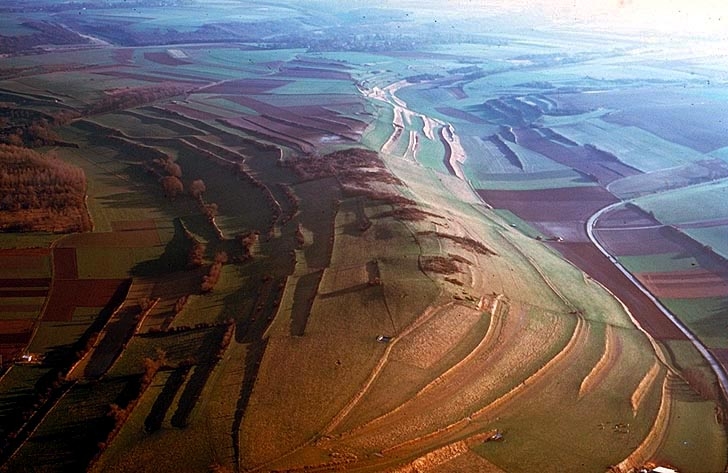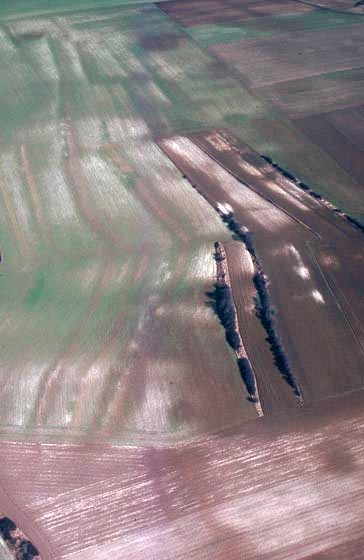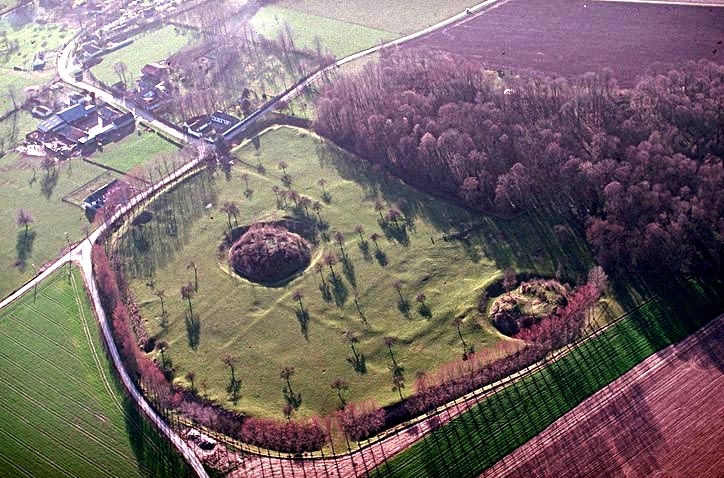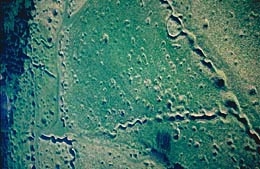- Home
- Clues on the ground
- Very low-relief shadows
- The shadow of the past
The spurs have not been leveled by consolidation efforts. They capture and hold the medieval land allotments. Criel-sur-Mer (Seine-Maritime).
Agricultural work has a tendency to level off any remains. On the other hand, it creates other sorts of reliefs.
Thus, the accumulation of soil in lower areas of fields led to the formation of "lynchets", which recent consolidations have often destroyed. They still exist in certain areas that were spared these land consolidations, or they are very visible in a raking light, like at Criel-sur-Mer (Seine-Maritime). It is interesting to study these spurs by comparing successive aerial flyovers by the l'IGN
In certain cases, the aerial archaeologist managed to photograph both the rare remaining "lynchets" and those that have recently been leveled, the latter appearing as long dark streaks. We can see that they are more or less parallel to each other, and spaced according to typically medieval measurements.
At Fouencamps (Somme), a few lynchets remain, but many others have been leveled, appearing as dark streaks.
Large medieval enclosure with two feudal mounds, photographed in raking light. Vismes-au-Mont (Somme).
One of the rare places ravaged by the terrible trench warfare of 1914–1918 that has been preserved as is, within the framework of the Newfoundland Memorial at Beaumont-Hamel (Somme).
The recent past
In particular, most shadow marks appear at the edges of villages throughout northern France. For the most part, these are twentieth century creations.
They can be agricultural, military, or cottage industry installations from both world wars, sometimes located very close to the front lines. These include training camps, areas for troop maneuvers, ammunition and fuel dumps, storage areas for impedimenta, railway lines, sorting stations (some of them huge, like the near Abancourt (Oise), barracks for troops, stables for horses, camps for prisoners and refugees, and even provisional shelter for victims of disaster.
Traces of the battles themselves are still visible where the countryside was not turned back into farmland, which is very rare, like at Beaumont-Hamel (Somme).




